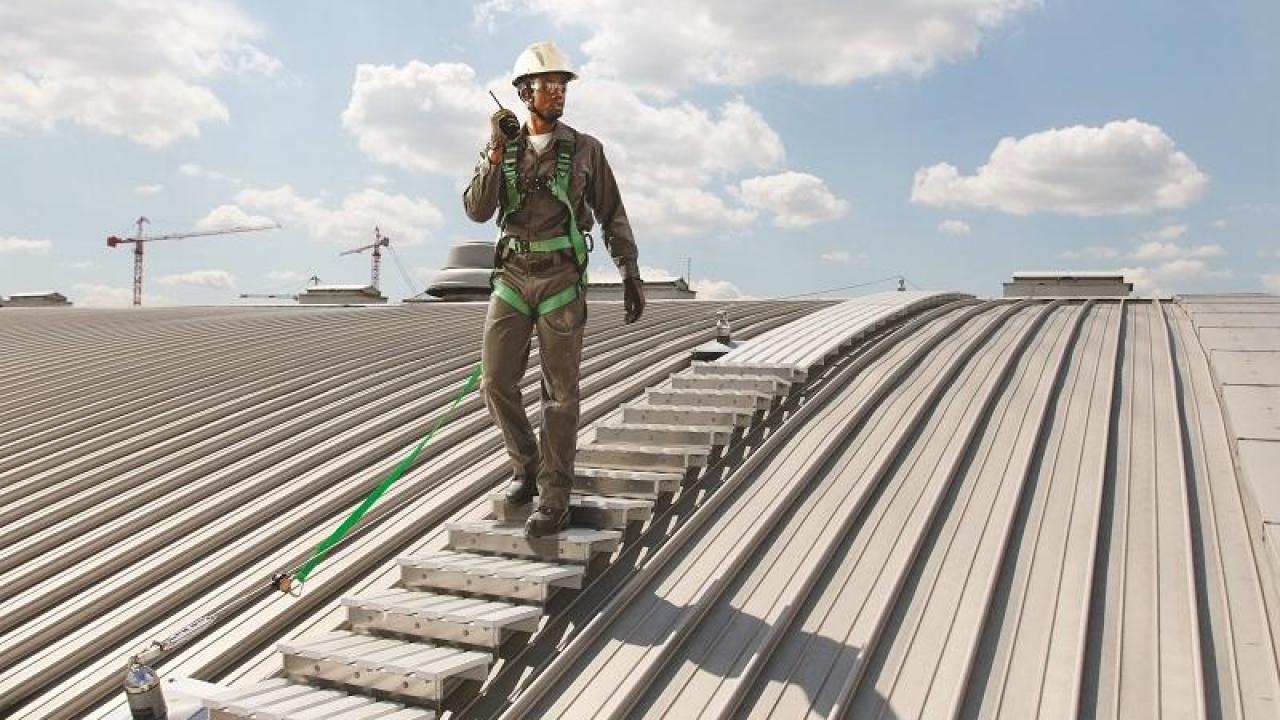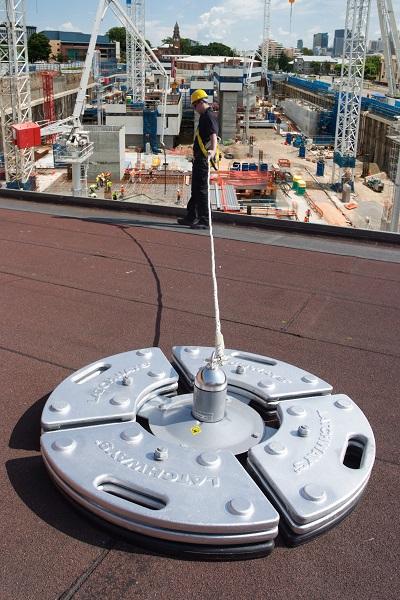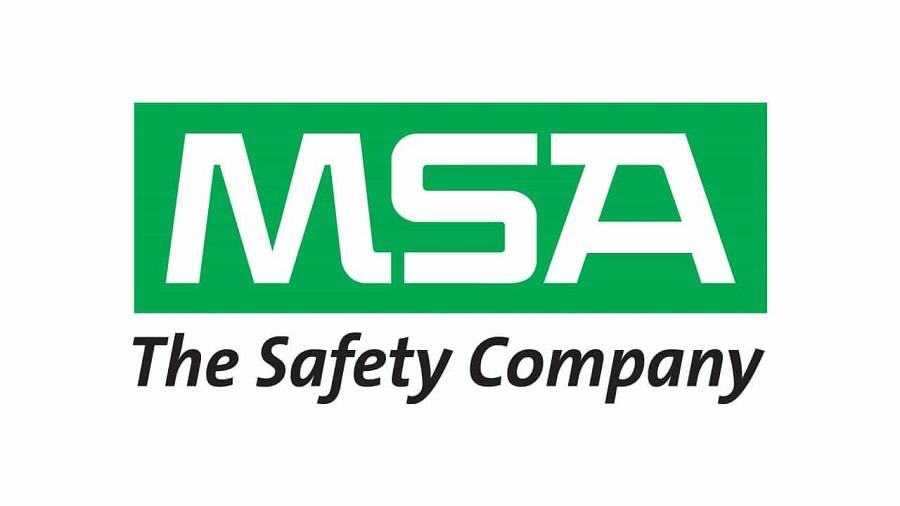

Protecting lives and structures with engineered systems
Andrew Pass is Global Engineering Manager for Fall Protection Engineered Systems at MSA Safety. MSA is a global designer, manufacturer and distributor of industry-leading safety products. A true engineer, Andrew is a specialist in understanding the requirements of high-quality fall protection systems. Here, he talks about engineered systems and the integral role that they play in keeping those that work at height safe.
What is an engineered system?
Fall protection solutions are generally split into two categories: Personal Protective Equipment (PPE) and engineered systems. PPE covers products such as lanyards, self-retracting lifelines and harnesses, whilst a system is essentially a product that is permanently attached to a structure or a building. It is what operatives attach themselves to, to stay safe while working at height.
What is the role of an engineered system?
In short, it controls energy. And, in doing so, a well-designed system should achieve two things: the protection of people and the integrity of the structures on which they are working. As I’m sure you can imagine, in the unfortunate event of a fall from height, a significant amount of energy is generated with force put on both the person falling and the building. To help mitigate the effect of this force, MSA fall protection systems are designed with smart, integrated energy absorption technology. This technology means that the system itself absorbs the majority of the force from the fall, rather than the building or, importantly, the operative.
What must be considered when specifying a system?
There are some key things that must be considered in order to get the specification of height safety solutions right. First and foremost, think about the Health and Safety Executive’s hierarchy of risk control. One, do you have to work at height? If at all possible, working at height should be avoided. Two, if it’s unavoidable, can collective protection (guard rails etc) be implemented? And three, if an engineered system is required, make sure that has it has been specified and designed with its specific use in mind and that it has been tested against not only the latest standards, but the application in hand. And finally, as with any work at height, prior to work taking place it is crucial that the end-user has received high-quality training from a reputable provider (such as MSA Safety) specific to the work required.
The fundamental consideration should of course be how and where the system will be used. Transmission towers, industrial buildings and wind turbines, for instance, all have very different requirements and typically systems must be designed to be durable enough to last 25-30 years. Care must be taken to implement an appropriate system for each unique application. MSA believes that there is no such thing as a ‘one size fits all’ approach when it comes to height safety systems.
Tell us a bit more about testing...?
There are lots of different test methods out there, but there are really two things we focus on at MSA:
- representative testing and exceeding standards. EN 795:2012 is an important standard when it comes to fall protection. It relates to the testing of anchor devices and is the minimum requirement for people working at height. I strongly urge anyone choosing fall protection systems to do so in accordance with this standard and supportive representative testing. We as an industry have a responsibility to do our utmost to help ensure people go home safely at the end of each day. Choosing equipment that passes strenuous tests and meets all relevant standards is crucial to doing just that.
- as far as possible, representative testing should be carried out, which means testing a system on the actual substrate it’s going to be attached to. There is little point testing products bolted to concrete floors if they are intended to be installed on aluminium roof sheet; performance could be completely different. There is also a new standard, EN 17235, being looked at under construction regulation CPR EU 305/2011. It will be an absolute game changer for the industry as it will make this type of testing a requirement. MSA welcomes this move, as we have been conducting representative testing since we first designed the Latchways Constant Force Post (MSA’s engineered system) 20 years ago.
Is the industry in general good at testing to the right level?
I think things have changed a lot in the past few years. There is much more education now around fall protection and a lot more awareness of what is important when it comes to testing. I also think that there has been a general move toward each and every link in the fall protection chain realising their individual responsibility toward end-user safety, whether that be architects, specifiers, contractors, or installers. That’s really encouraging. High quality equipment can, for instance, count for little if it’s incorrectly installed or the end-user hasn’t received sufficient training. It’s therefore vitally important that each link in the fall protection safety chain does all they can to help mitigate the potential risks associated with working at height.

What’s the biggest change you’ve seen in the industry over the last five years?
Construction capabilities have grown massively so we’re seeing a lot of different and sometimes complex structures. Long gone are the days of standard square buildings! With beautiful curves and unique shapes, however, comes differing needs for fall protection. These often-complex structures can put even more of an impetus on the quality of both the height safety system itself and its installation, which is why it’s vital to partner with reputable partners, including manufacturers, training providers, and installers.
There are also more systems out there, which is in part a good thing, but is also something to be potentially wary of, and it’s important to understand the different offerings. The priority must remain on selecting the proper fit for the unique application, rather than merely choosing the least expensive solution. That said, Europe has and continues to drive full protection in terms of standards and regulations. Generally speaking, the rest of the world looks to Europe as a leading example.
If you could pass one message onto the industry what would it be?
Understand clearly what is required of the engineered system so that the right equipment can be chosen, and accurate system designs implemented. Make sure that the system has been tested to and meets the very latest standards. Principal designers, specifiers, contractors, and others in the fall protection chain should, as far as possible, insist that the very best height safety specification is stuck with and not changed for an option that may not perform as well or be as well suited to the application.

